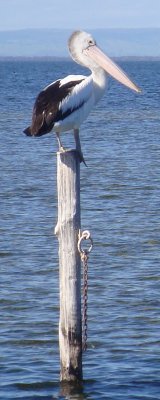 I have migrated this blog to http://blogs.uwa.edu.au/traces/ – please update your links and loyalties!
I have migrated this blog to http://blogs.uwa.edu.au/traces/ – please update your links and loyalties!
Thanks
Andrew
 I have migrated this blog to http://blogs.uwa.edu.au/traces/ – please update your links and loyalties!
I have migrated this blog to http://blogs.uwa.edu.au/traces/ – please update your links and loyalties!Thanks
Andrew
 Two ways to receive open access to Nature group journals are being offered:
Two ways to receive open access to Nature group journals are being offered:
This has got to be a good thing for science in general and the sharing of high-impact scientific knowledge. In the context of this blog, the increased access to Nature Geoscience is excellent.
.
See the original full story at http://www.nature.com/press_releases/share-nature-content.html
 Today, Friday 5 December, is World Soil Day.
Today, Friday 5 December, is World Soil Day.
More information on this is available at website of the Food and Agriculture Organization of the United Nations (FAO).
(or, if you prefer, on the World Soil Day Facebook site)
This year, World Soil Day foreshadows the International Year of Soil in 2015. World Soil Day events are happening in Australia, the USA, New Zealand, and many other places (or here).
Soil science has made significant contributions to environmental geochemistry, in areas such as the physical chemistry of mineral surfaces, understanding of organic matter, and so on. Continue reading
 Plants that can take up unusually high concentrations of metals or other trace elements into their tissues, or hyperaccumulators, have been known for a few decades (see especially the work of R.R. Brooks and colleagues; e.g., Brooks et al., 1979). A new nickel hyperaccumulator, Rinorea niccolifera, has been described from the Philippines, and it can accumulate Ni concentrations in foliage as high as 18000 ppm, or 1.8%.
Plants that can take up unusually high concentrations of metals or other trace elements into their tissues, or hyperaccumulators, have been known for a few decades (see especially the work of R.R. Brooks and colleagues; e.g., Brooks et al., 1979). A new nickel hyperaccumulator, Rinorea niccolifera, has been described from the Philippines, and it can accumulate Ni concentrations in foliage as high as 18000 ppm, or 1.8%.
Hyperaccumulators are known for other elements as well, including cadmium and zinc (Brown et al. 1995) and, more recently, arsenic (Ma et al. 2001), and even gold (Anderson et al. 1999). Continue reading
Congratulations to Amber Balfour-Cunningham and Charlotte Patrick from the University of Western Australia, who shared the Paul Turner Scholarship based on their work on the Anvil Way Constructed Wetland environment in the third-year unit Environmental Assessment ENVT3361.
Their win is also reported
The US Geological Survey recently reported that a number of significant river systems had become less acidic, an outcome attributed to lower acidic inputs from industrial waste, acid mine drainage, or atmospheric deposition. The full study is:
Stets, E.G., Kelly, V.J., Crawford, C.G., 2014. Long-term trends in alkalinity in large rivers of the conterminous US in relation to acidification, agriculture, and hydrologic modification. Science of The Total Environment, 488–489, 280-289. doi:10.1016/j.scitotenv.2014.04.054 Continue reading

Dr Andy Lucas, the consummate t-shirt wearer, unwrapping the only sensible farewell gift. Note the evidence of coffee and cake, essential for all celebrations, big or small.
A PhD student’s completion after thesis submission and successful examination are cause for both celebration and sadness. A couple of weeks ago we bid farewell to the newly-minted Dr Andy Lucas who, having waited for completion of his thesis examination at UWA was off to Singapore for more exciting scientific adventures. Continue reading
 It’s sad to note the increasing number of reports of contamination of Chinese soils and food (i.e. rice) with a range of potentially toxic substances, especially metals and metalloids like cadmium, lead and arsenic.
It’s sad to note the increasing number of reports of contamination of Chinese soils and food (i.e. rice) with a range of potentially toxic substances, especially metals and metalloids like cadmium, lead and arsenic.
Some of the data on contamination of rice have come from recent reports sponsored by Greenpeace, following up on earlier reports of “cadmium rice” in the news media.
The reports on contamination of rice make perfect sense, unfortunately, when read in the context of other reports on widespread soil contamination with metals in China; for example, see the reports from BBC News and ABC Australia, suggesting that up to one fifth of the soil used for crop production in China is contaminated. The sources of contamination are believed to be mostly waste from industry and mining, and agricultural production itself.